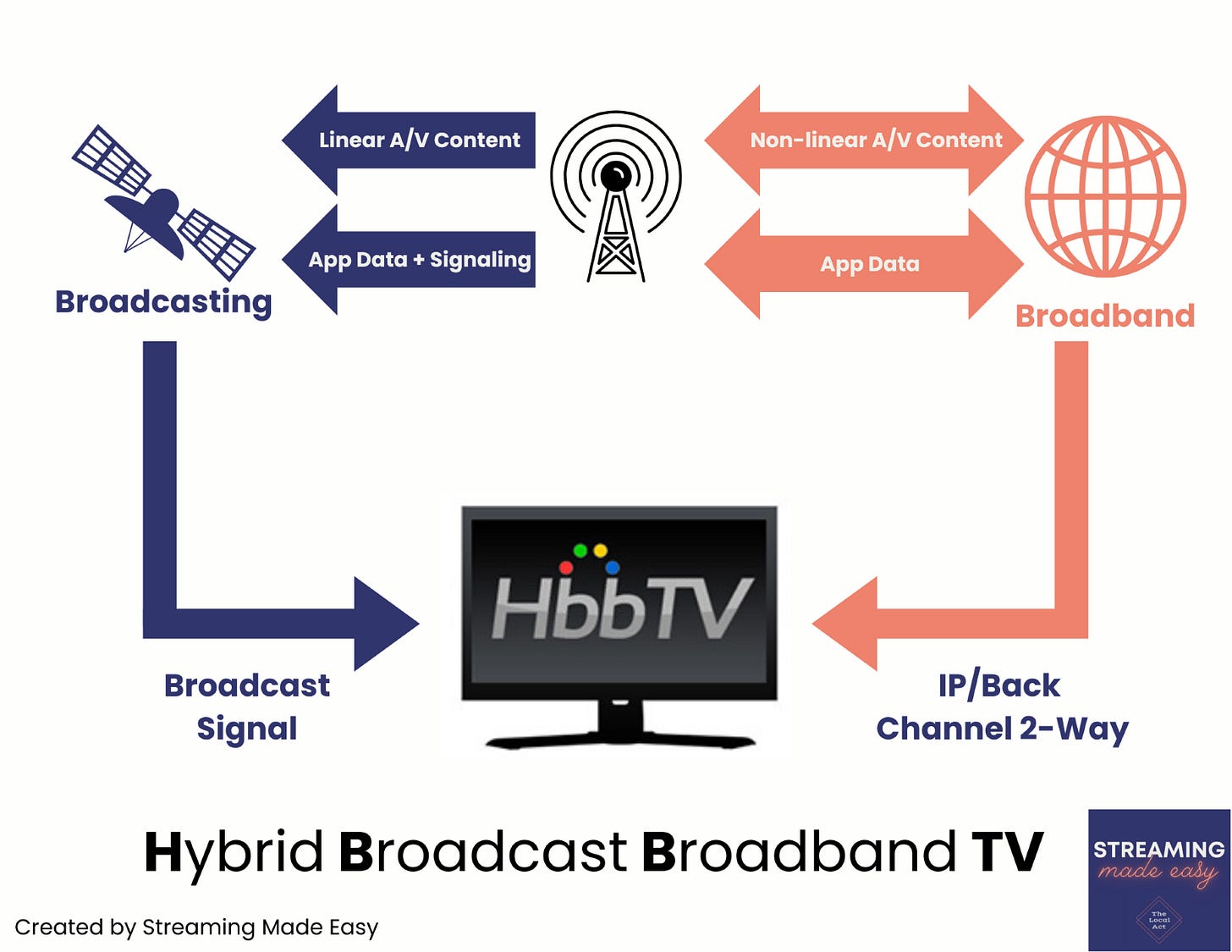Not that I like to add complexity, nor fuel our industry’s love for acronyms but I feel HbbTV is one worth discussing.
Why?
Because it’s an open standard bridging the digital and broadcast worlds. Despite the catchy headlines on the death of Linear TV, 53% of Europeans say that Linear TV is their first destination when turning on their TV set (vs 35% in the US) according to a RTL’s survey. This calls for Broadcasters to build entertainment vehicles adaptable to any ecosystem, method of delivery and device. Is HbbTV the answer? Let’s find out.
Today at a glance:
What is HbbTV?
What’s the appeal for Broadcasters? Advertisers? Viewers?
What is the reach of HbbTV?
Who operates in HbbTV today?
What lies ahead for HbbTV in a fragmented CTV world?
Mentioned in this edition: HbbTV Association, Dataxis, Samsung, Philips, LG, Sony, Panasonic, Toshiba, Loewe, Sharp, ARD, ZDF, France Télévisions, Arte, Mediaset, RAI, LOVEStv, TivùSat, ORF, M6+, Freely, BBC, ITV, Channel 4, Channel 5, RTL Ad Alliance.
What is HbbTV?
It’s worth a definition for non experts, me included.
“Hybrid broadcast broadband TV (or “HbbTV”) is a global initiative aimed at harmonising the broadcast and broadband delivery of entertainment services to consumers through connected TVs, set‐top boxes and multiscreen devices. The HbbTV specification is developed by industry leaders to improve the video user experience for consumers by enabling innovative, interactive services over broadcast and broadband networks.” - HbbTV Association
It’s a technical specification, one that is standardised to facilitate its deployment by video services across a suite of connected devices. I’ll go ahead and simplify by saying it’s TV in the digital world, the beauty of broadcast and broadband brought together.




